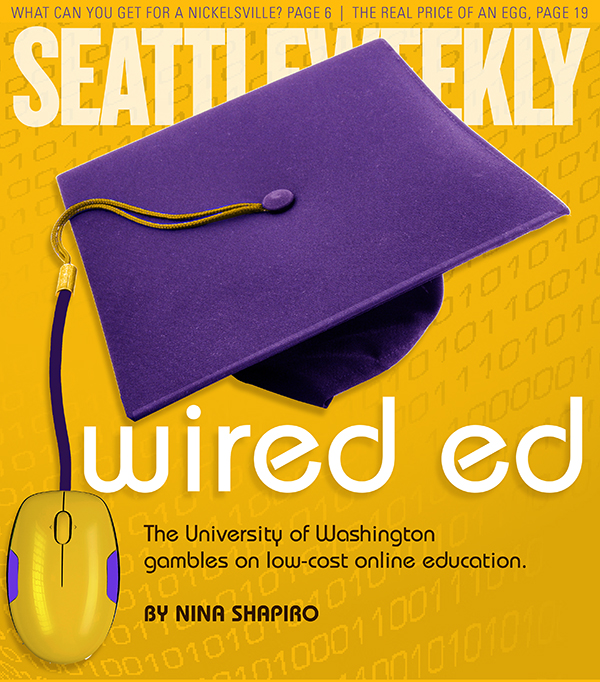Last fall, an engineering professor at San Jose State University named Khosrow Ghadiri tried something radical in his Introduction to Circuits course. He made a MOOC a central part of the his class curriculum. MOOCs are free online courses that have become a worldwide sensation, both wildly popular and controversial. They are prompting a shake up of higher education, including at the University of Washington, as this week’s cover story details.
The MOOC Ghadiri used was particularly controversial because it came from MIT, feeding a fear among San Jose State faculty members that their jobs would soon be outsourced. Yet the engineering professor’s results were undeniable.
Before last year, the circuits class had a 59 percent pass rate—a big problem because engineering students were required to pass the class before continuing on. In the first semester that Ghadiri introduced the MOOC, the pass rate shot up to 91 percent. That impressive leap got national press coverage, and has served as a case in point for those arguing the merits of online courses.
Yet, as Ghadiri explains, his use of the MOOC was only the beginning of a story about what happened last year.
The veteran engineering professor, who hails from Iran, says he decided to try something new because he “was noticing that the system of education is not functioning correctly.” One of the big problems he saw was that students, having grown up in the digital age, were no longer reading the assigned textbook before coming to class. “Then my job in the classroom was to summarize the textbook,” he says. This ran contrary to his beliefs about teaching, which he thought should be about helping students understand the most challenging material.
He also found that students would tune out after the first five or 10 minutes of a lecture, causing them to miss a lot of technical material. “Sometimes, I would turn around and see on their faces that they don’t understand.”
He saw the MOOC as a way of combating these problems because students could watch the lectures online in short snippets, rewinding or fast-forwarding as necessary. He didn’t see the MOOC as a replacement for him. He thought of it as akin to a textbook—a “talking textbook.”
Then he set about completely rethinking what he did in class. He gave two quizzes every class to see what students understood from the material. He would spend 15 minutes going over the most difficult concepts, and then break up into group work. He and two TAs went around the room to answer questions.
He says students told him they got a lot out of the teamwork, and they apparently didn’t dare missing the quizzes. Hardly anyone ever skipped class, which was far from the case before. “It was astonishing,” Ghadiri says.
After each class, Ghardiri analyzed the quizzes and sent e-mails to students about their results. “I think you should put your effort here,” he might say. He appreciated the benefits of this careful analysis. “This is the first time in my entire life that I know my students one by one,” he says. In the past, he says, he would “go to a lecture hall and look at 86 students he didn’t recognize.”
The e-mails (sometimes 86 in one day), the class preparation, the designing of quizzes, all that required much more time than he ever used to put into a lecture class. He estimates that he spent 60 to 80 hours a week on just the circuits course.
And he sees that work—and what subsequently happened in class—as critical to the success of students. The MOOC just freed up class time to allow that to happen.
Asked about whether he thinks online-only classes could work, he’s skeptical. “Maybe it’s doable, but I don’t think so,” he says.
Therein lies the challenge for UW as it embarks on new online degree programs for undergraduates. The academics designing the biggest such program, which if approved by the faculty senate will offer a B.A. in social sciences, are hoping to keep students engaged with online counselors, webinars and interactive forums. But the strategy is as yet unproven. Questions emerge even from one of online teaching’s greatest success stories.








